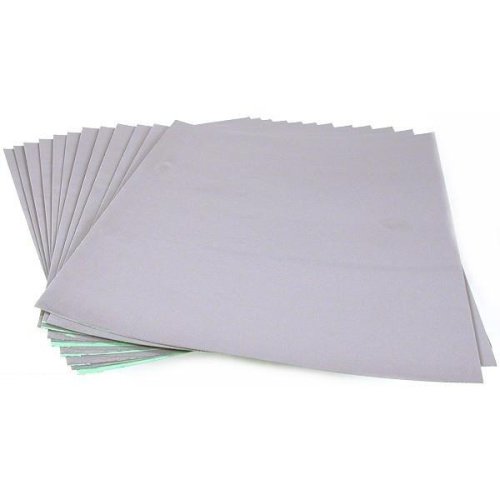Sandpaper
Sanding is an important step in making jewelry. Be sure you know about and purchase the correct sandpaper.
1 Minute Read
To smooth metal to a fine finish, jewelry sandpaper is needed. The most common types of jewelry sandpaper is made from emery, silicon carbide, and aluminum oxide. Aluminum oxide is the most commonly used and the least expensive.
The sandpaper comes in degrees of grit sizes from coarse (180) to fine (1200 or greater). Sometimes, you will find sandpaper measured in microns (Greek system), but the US grit measurements are usually listed as well. Grits are also measured as 0/0 for coarse grits up to 6/0 for fine grits.
You will need a range of grit sizes, working up to a fine polish. You start with the coarsest grit, then move to a finer grit, then move to the finest grit until the jewelry is free of scratches and tool marks. File in the same direction, sanding the entire piece. When you move to a finer grit, sand in a perpendicular direction from the previous grit, sanding the entire piece in that direction. Be sure to do this with every component you add to the piece, you will have less polishing when the jewelry is complete.
Sandpaper is purchased in sheets. Buy packs of 180, 400, and 800 or finer or buy a pack with various grit sizes first, then purchase more of a specific grit as you need them. Wrap one grit size around an emery stick and tape it, doing this for each grit size you have. The sandpaper is much easier to handle this way and gives you better control.
Gesswein has sandpaper packs and different grits available on their website. Amazon also has an excellent selection of different grits of sandpaper available on their website. The more expensive paper is color-coded by grit size, but the economy sheets are a great buy.
Start with inexpensive sandpaper first and save your money to purchase top-of-the-line tools.
Megan Coward, Graduate Jeweler Gemologist, GIA, Graduate Gemologist
Megan Coward is a graduate of the GIA with Graduate Jeweler Gemologist and Graduate Gemologist accreditations. She has 20+ years in the retail jewelry industry in various roles including as a diamond buyer and gemstone appraiser.
Related Articles
How Are Needle Files Used in Jewelry Making?
How are Pliers Used in Jewelry Making?
How Are Wire Cutters Used in Jewelry Making?
What Is a Third Hand Used for in Jewelry Making?
Latest Articles
800 Years of Mogok: A Celebration in Tenuous Times
What is the Average Gemstone Faceting Yield?
Pyroxmangite Value, Price, and Jewelry Information
How to Identify Emerald Simulants and Synthetics
Never Stop Learning
When you join the IGS community, you get trusted diamond & gemstone information when you need it.
Get Gemology Insights
Get started with the International Gem Society’s free guide to gemstone identification. Join our weekly newsletter & get a free copy of the Gem ID Checklist!
